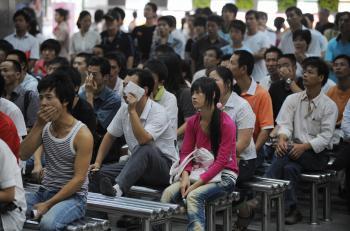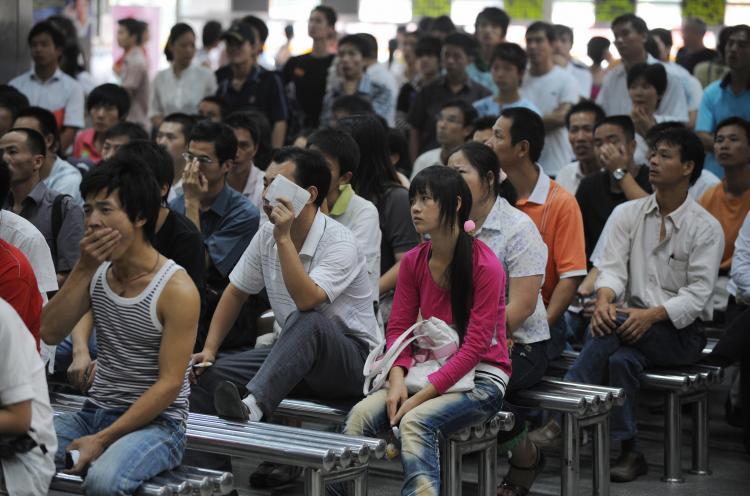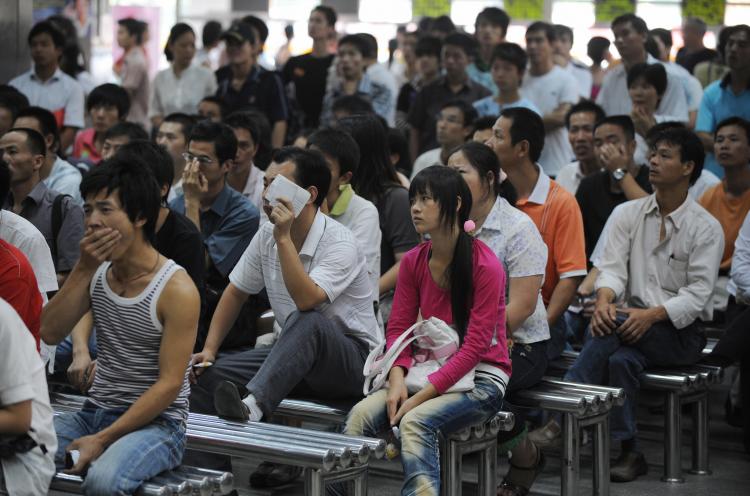Rising Unemployment Rate
On November 20, Yin Weimin, Minister of Human Resources and Social Security, spoke at a press conference held in the State Council Information Office. He addressed three noteworthy changes that took place in October. First, the employed workforce in metropolitan areas fell quickly for the first time in several years; second, employment demand from businesses fell 5.5 percent for the first time in many years, and current open positions are disappearing fast.Yin said that by the end of the third quarter, registered unemployment rates in metropolitan areas was 4 percent, which might rise to 4.5 percent by the end of this year and continue to increase next year.
Reality May be Much Worse
There are 230 million migrant workers in China and 120 million of them work away from their home cities according to Yin. Because these workers have a high turnover rate, “Currently there has not been an investigation to determine their unemployment rate.”
“The number of unemployed by the end of this year and next year will definitely be higher than it is now,” said Yin. In the past, large crowds of migrant workers returning home were only seen when Chinese New Year approached, which is normally at the end of January. This year, the returning crowds are already being seen in early November, indicating the severity of unemployment. Yin admitted, “There is a portion of labor-intensive small and medium businesses that have filed for bankruptcy or halted production. Some migrant workers lost their jobs as a result.” This will continue to increase the number of jobless workers retuning home.
According to a recent Chinese media report, data from the Guangzhou Train Station showed in early October that the number of departing passengers compared to the same period last year had increased by 128,000.
Root Cause of Unemployment is Product Safety
Media in China reported there were 67,000 small to medium businesses that closed down in the first half of this year. The new wave of bankruptcies is still being monitored. In Guangdong Province alone, there are over 25,000 bankruptcy cases or notices of businesses shutting down that have been filed by companies whose home office is in Taiwan or South Korea.
The problem worsened after June 2008. The shutting down of manufacturing enterprises in the Zhu River Delta and Yangtze River Delta has caused 10 million migrant workers to lose their jobs. Over 20 percent of migrant workers from provinces such as Hunan, Henan, Jiangxi, and Sichuan have returned home.
Many people believe this wave of business/factory failures is caused by the international financial melt down. Chinese economist Ms. He Qinglian had a different opinion, “The fading of China’s economy started last year (2007). We all know that was when lead-loaded toys made in China were boycotted in the United States and millions of toys were taken off the shelves. Immediately thereafter, the same problem surfaced in European countries several times. Afterwards, many toy companies declared bankruptcy.”
Ms. He believes that in the past two years, a series of product safety violations involving toothpaste, medicines, pet food, home appliances to melamine tainted milk, have taken a heavy toll on the manufacturing sectors in China.
Read the original article in Chinese






